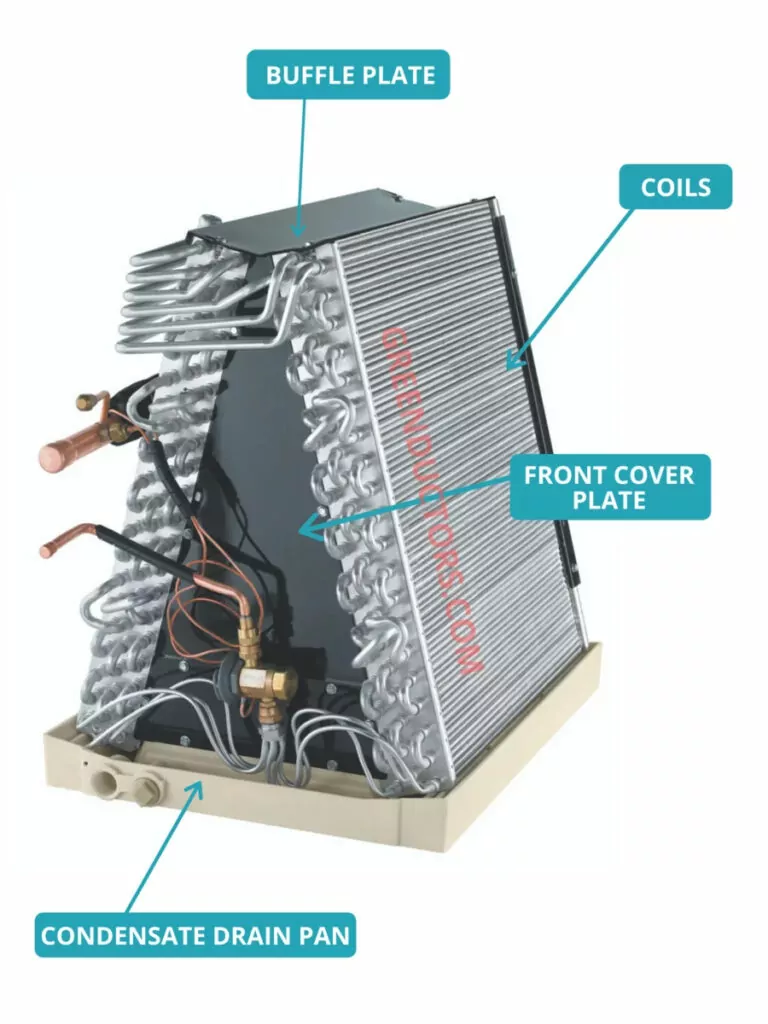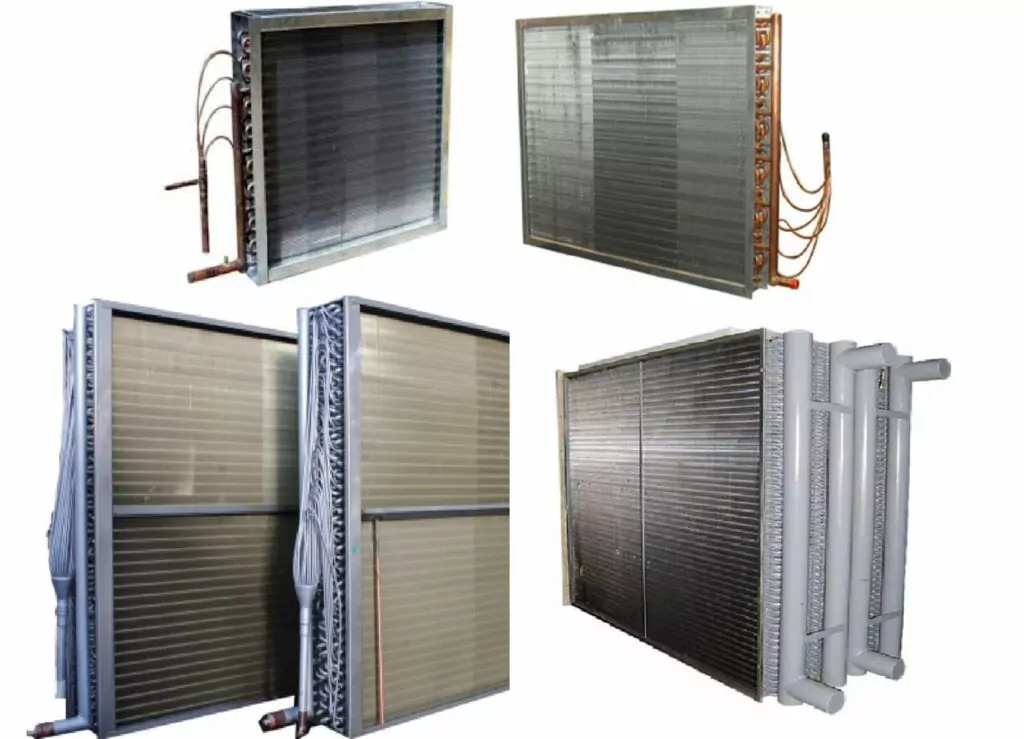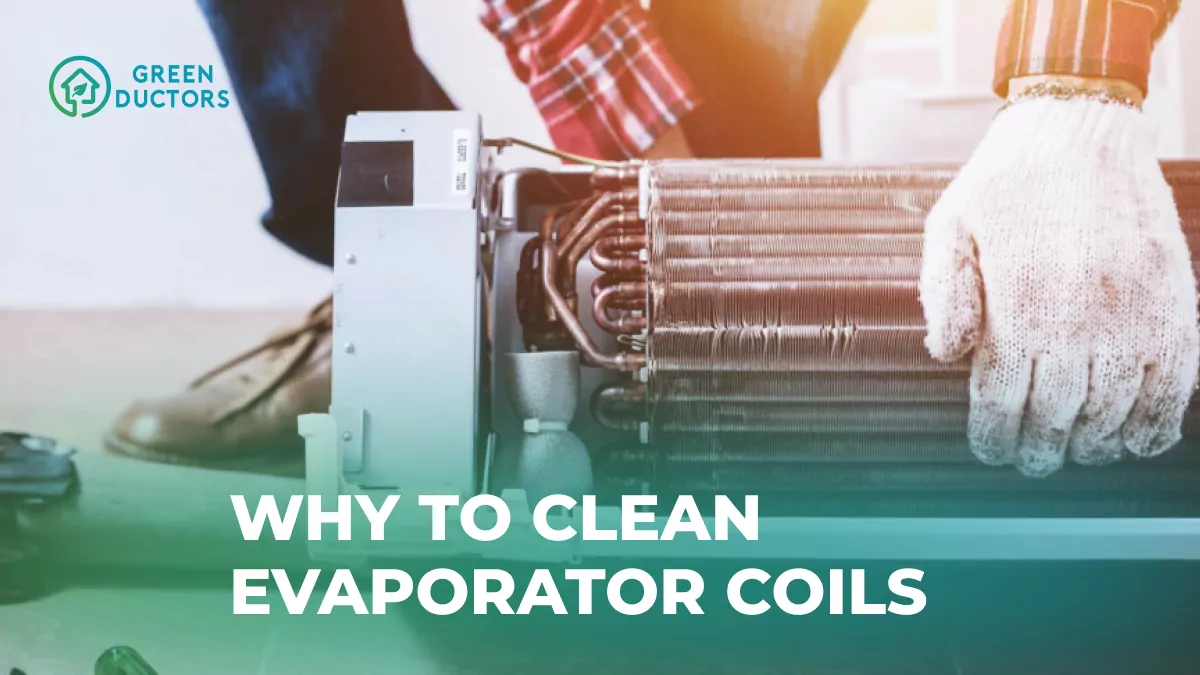Evaporator coils absorbs heat from your house. Commonly they’re made of copper and surrounded by multiple aluminum fins that intensify heat transfer.
Cooling Coils or AC Evaporator Coils are a component of the HVAC system. It comes in two forms. One, that refrigerates directly from the AC unit. The AC unit outside is piped straight to the DX unit (a direct expansion air conditioning unit) within the AHU (an air handling unit) or the fan cooling unit. When it’s refrigerant-based it has an expansion valve, which is regularly placed directly outside the coil.
*common for small shops or buildings.

Chilled Water Cooling Coils
From a realistic point of view, it is more efficient if a house has multiple AHU or fan coil units. It’s better to have it from a centralized system rather than a localized direct expansion unit. The setup is common for large buildings.
If the cooling coil is fed by chilled water, then the water flows in through the bottom and the passages inside the unit make their way to the top and exit back to the chiller.

Why to clean the coils?
Cooling
Coils provide the cooling necessary to produce cold air that maintains the right temperature inside your home, even when it is too hot outside.
Air Dehumidification
Evaporator coils are also involved in air dehumidification. If coils get cooler, the condensation process begins. This helps to remove water from the indoor room air. Moist collects in a drain pan, from where it flows away safely.
Escaping the dirt
If the evaporation coils get dirty, their performance is reduced. Air blowing across the coils may contain dust, pollen, and other particles. Since the coils are normally damp from the draining process, contaminants adhere very easily to them. Dirty air filters in the system (or the complete lack of filters) can increase the amount of material that comes into contact with the evaporator coil. In just a short time, enough material can accumulate on the coils to affect their performance.
How can you tell if an evaporator coil is bad?
To make sure if your cooling coils are operating efficiently ensure that the fins are cleaned regularly.
Hot air from the outside condenses on cooling coils. It makes the cooling coils surface very moist and all the dirt and dust, that hasn’t been captured by the filters (especially if you don’t track the filter renewal time) will stick to coils.
It will add a layer of insulation and will slow the heat transfer or the thermal energy transfer out of the tubes to the fins. The chilled water passing through the tubes. The fins extract cold thermal energy out of the airflow. The air passes through the gaps in between. The more dust that covers the fins, the lower the chances of the air coming in contact with the cold surface and takes the thermal energy away.
- Check for warm air flow from vents
- Are there any signs of a water leak near the heater?
As air handlers distribute cool or warm air throughout your house, and the starting point is the HVAC unit, where the evaporator coils are located, a water leak may come from the coils, which indicates that coils are failing.
If cooling coils are not cleaned properly following problems can appear
- Reduced heat transfer
- Wear on the system increases. It can lead to component damage, system malfunctions and reduced life expectancy
- Buildup of ice on coil
- Decreased cooling capacity
- Increased energy consumption
- Increased operating pressures and temperatures
How often should evaporator coils be cleaned?
To minimize energy usage and reduce utility costs, the A/C coils should be cleaned at least once a year. It is estimated that dirty evaporator and condenser coils can increase the energy usage of your air conditioning system by over 30%.

